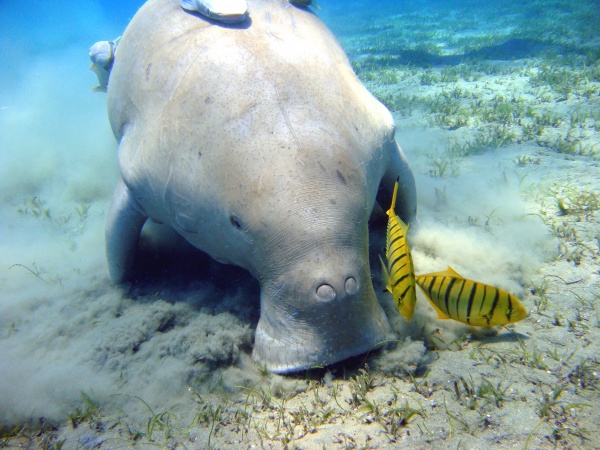Facts About Dugong
The dugong is a medium-sized marine mammal and the only herbivorous marine mammal, found in the coastal waters of approximately 40 countries across the Indo-West Pacific region. These creatures are highly dependent on seagrass for sustenance, thus confining their habitat to coastal areas abundant in seagrass meadows. Featuring a streamlined body without a dorsal fin and hind limbs, dugongs possess paddle-like flippers and a tail similar to a dolphin’s.
For millennia, humans have hunted dugongs for their meat and oil. Although traditional hunting continues in certain areas, many dugong populations now verge on extinction due to activities such as fishing, habitat destruction, and poaching.
Dugongs are part of the Sirenia order, which also includes manatees, often referred to as "sea cows." Fossil records trace their presence back 50 million years, during which they faced decline due to climate changes, oceanic shifts, and human actions. The dugong’s nearest relative, Steller's sea cow, was hunted to extinction in the 18th century. Dugongs are characterized by their unique skull, teeth, and body structure, featuring a cylindrical shape that tapers at both ends, thick skin, and distinct dental patterns. They can live up to 70 years but have a slow reproduction rate, making them highly vulnerable to extinction.
Dugongs inhabit warm coastal waters from the western Pacific Ocean to the eastern coast of Africa, spanning 37 countries and territories. Nevertheless, their global population has decreased by 20% over the past 90 years, with some regions witnessing complete disappearances. They favor wide, shallow bays and are known to travel extensive distances in search of food, generally staying within a specific range throughout their lives. While they primarily consume seagrass, they may occasionally eat invertebrates.
Several threats assail dugongs, including hunting, habitat loss, fishing-related fatalities, boat collisions, and environmental degradation. The International Union for Conservation of Nature (IUCN) lists them as vulnerable, and international agreements such as the Convention on International Trade in Endangered Species (CITES) regulate or prohibit the trade of dugong products.
Conservation efforts exist in various countries where dugongs are found, yet significant challenges remain. Enhanced research, stricter enforcement of conservation laws, and strategies to mitigate human impacts on dugong habitats are essential for their continued survival.

 Vietnam
Vietnam